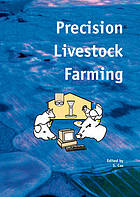Comparison of data driven mastitis detection methods
Abstract
The aim of this study is to compare the performances of different data driven methods for their ability in early detection of clinical mastitis. Many scientific papers on data driven methods for early mastitis detection have been published in the last decade. The performances vary greatly as well as the data used, the applied time window, and the gold standard definition. To compare the performances of these data driven methods, this study applied various data driven methods including time series filtering and classification methods (i.e. Naïve Bayesian networks and Random Forest) under similar conditions. Forecast errors and filtered means of the time series models were used to distinguish mastitis cases from non-cases. Moreover, we focused solely on electrical conductivity (EC) measures of milk to detect clinical mastitis. Data for this study were provided by Lely Industries and originate from 57 farms in six different European countries with a total of 1,094,780 cow milkings with EC measurements at quarter milk level. It is hypothesised that the performances with respect to mastitis detection will differ substantially between the different methods, and that the ranking of methods is not consistent across different datasets. Despite this, our preliminary results suggest that the performances of Naïve Bayesian networks and Random Forest do not vary much. The various filtering methods also present similar results. Although our naive approach of data handling allows us to compare different methods, we expect that each method in itself have the potential to improve when other (historical) variables than just EC are included.
Download full text in pdf format
 Published as:
Published as:
D. Jensen,
M. van der Voort,
C. Kamphuis,
I. N. Athanasiadis,
A. de Vries,
H. Hogeveen,
Comparison of data driven mastitis detection methods,
Proceedings of the 9th European Conference on Precision Livestock Farming, pg. 626-632,
2019.
You might also enjoy (View all publications)
- Corn yield estimation under extreme climate stress with knowledge-encoded deep learning
- AirCast: Improving air pollution forecasting through multi-variable data alignment
- A virtual lab maturity model for guiding the co-development of advanced virtual research environments
